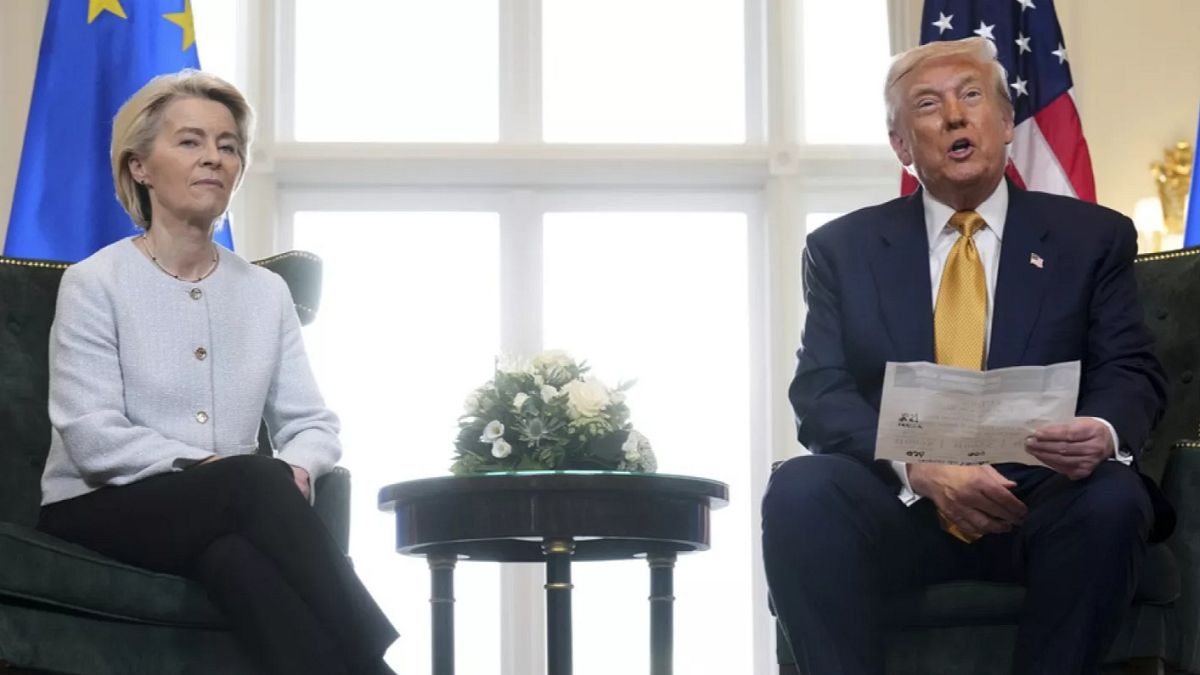

In a world interconnected through trade and policy, recent developments shed light on the intricate negotiations and strategic decisions that shape our global economy. These dynamics play out across continents, steering the course of nations and impacting local communities. As we explore these recent events, it’s important to savor the calm and clarity these changes bring to our collective understanding of international relations and economic policy.
In Germany, a wave of contemplation has surfaced among businesses and politicians in response to the recent EU-US trade deal negotiated by European Commission President Ursula von der Leyen. The agreement has introduced a new customs arrangement with the United States, setting a tariff rate at 15%—a compromise that averts a more severe 30% tariff while nonetheless marking a significant increase from last year’s 1.2%. This development carries potential implications for Germany’s economy, sparking concerns regarding its impact on growth and industrial competitiveness. Nevertheless, both sides recognize the importance of maintaining strong transatlantic ties, with the deal viewed as a pragmatic step to prevent further escalations.
Alongside these trade negotiations, the European Union is embarking on discussions surrounding its long-term financial blueprint. The European Commission has unveiled a proposed budget of €2 trillion, drawing focus to the intricate balance of priorities. A noteworthy aspect of this proposal involves the merging of agricultural and cohesion funds—a move intended to streamline resources but one that has elicited concerns regarding its effect on rural and regional development. Ursula von der Leyen, defending this strategy, emphasizes the need for an effective allocation of resources amid evolving challenges. The balancing act between innovation, sustainability, and inclusion remains a central theme as EU leaders negotiate these financial pathways.
On a broader global stage, efforts to foster economic stability and cooperation continue. In Sweden, prominent discussions are underway between representatives of the United States and China—two of the world’s largest economies. As a critical 90-day pause on tariffs edges closer to its conclusion, both nations are keen on achieving a breakthrough that could pave the way for reducing trade tensions. These meetings reflect a shared commitment to exploring pathways that mutually benefit both countries, potentially setting a precedent for harmonious economic relations elsewhere.
Meanwhile, Spain provides a beacon of positivity within the eurozone with its robust economic performance. In the latest quarter, the Spanish economy expanded by 0.7%, propelled by buoyant household consumption and increased business investment. This growth trajectory is further buoyed by strong employment statistics, establishing Spain as an exemplary model of resilience and vibrancy within the European economic framework. Such progress not only strengthens Spain’s economic standing but also underscores the significance of strategic domestic policies that enhance prosperity and well-being.
In evaluating these developments, one might reflect on the interconnected nature of our global economic systems. Each decision, negotiation, and policy carries rippling effects, imparting lessons and encouraging adaptive measures. Across continents, nations strive to navigate complexities with insight and composure, crafting a mosaic of interdependencies that define our shared economic landscape. While challenges inevitably arise, the journey toward sustainable growth and collaboration continues to be a testament to the enduring pursuit of understanding and cooperation in an ever-changing world.
As we ponder these dynamics, let us appreciate the quiet strength and resilience of the international community. This period of negotiation and adjustment serves as a reminder of the power of dialogue, the importance of strategic foresight, and the shared aspirations that unite us in our pursuit of a harmonious and prosperous future.
Source: {link}
